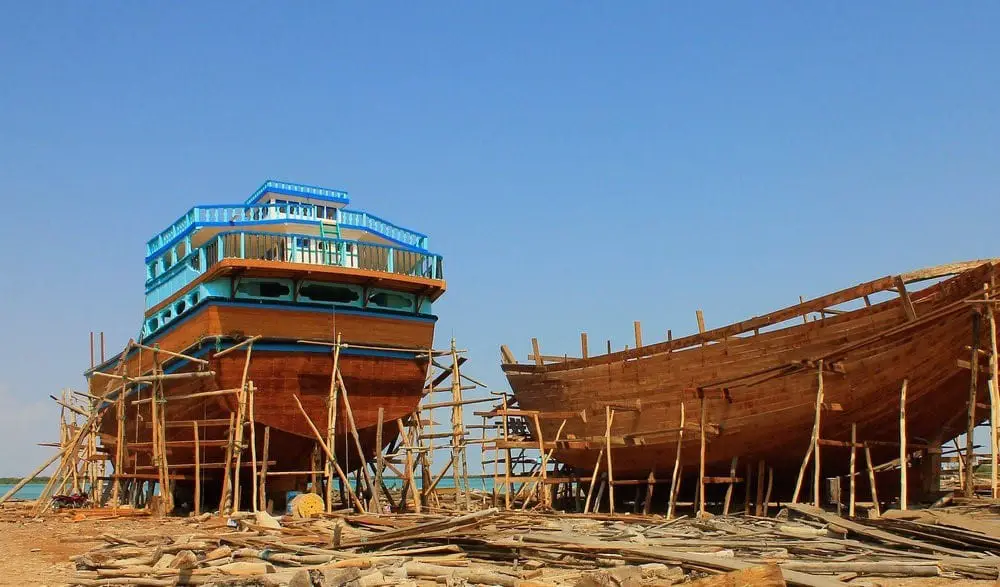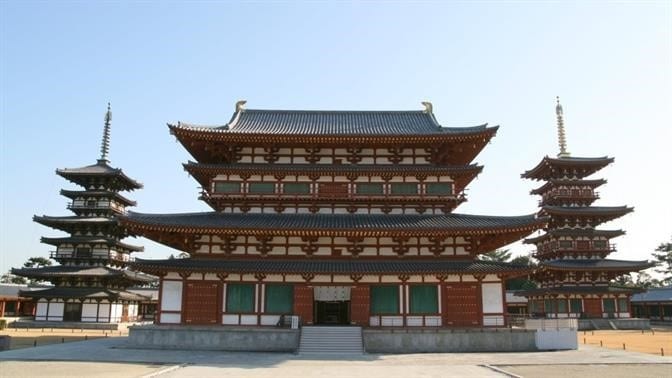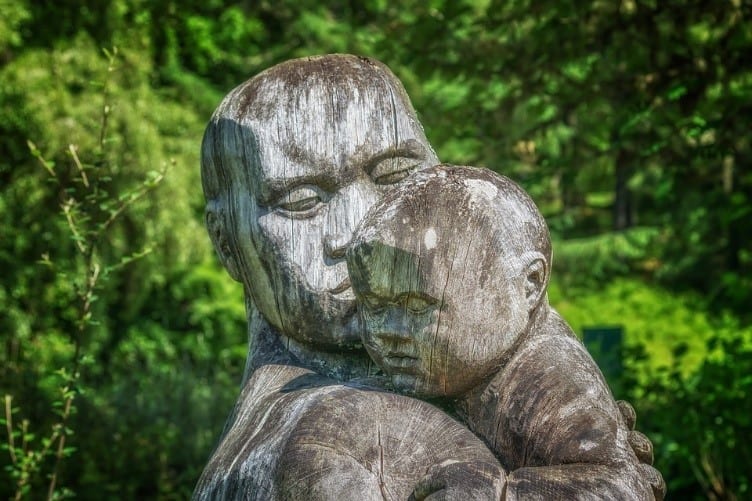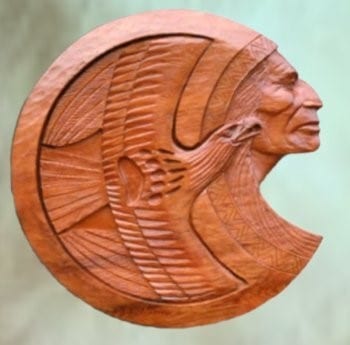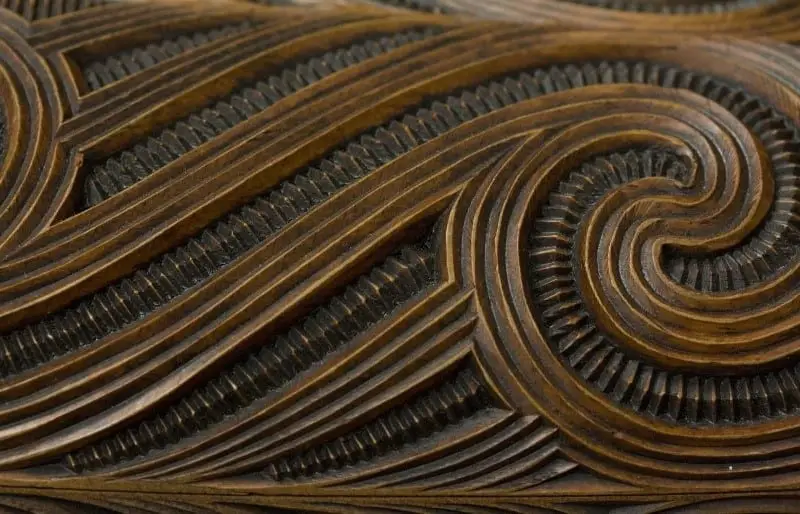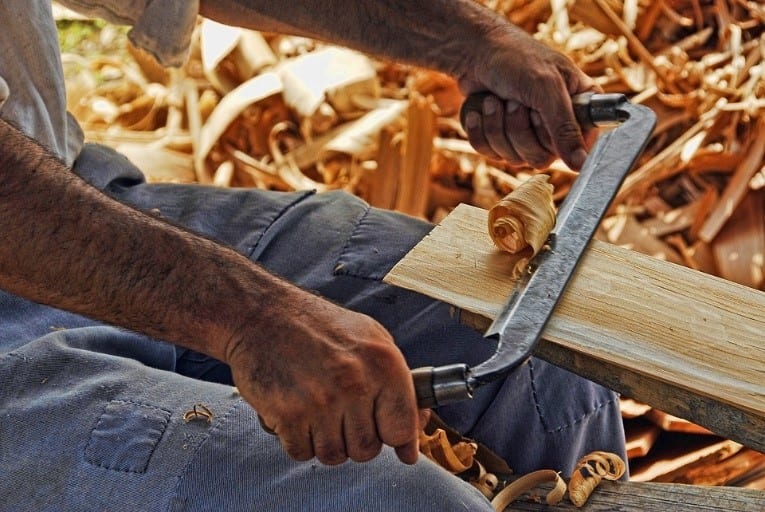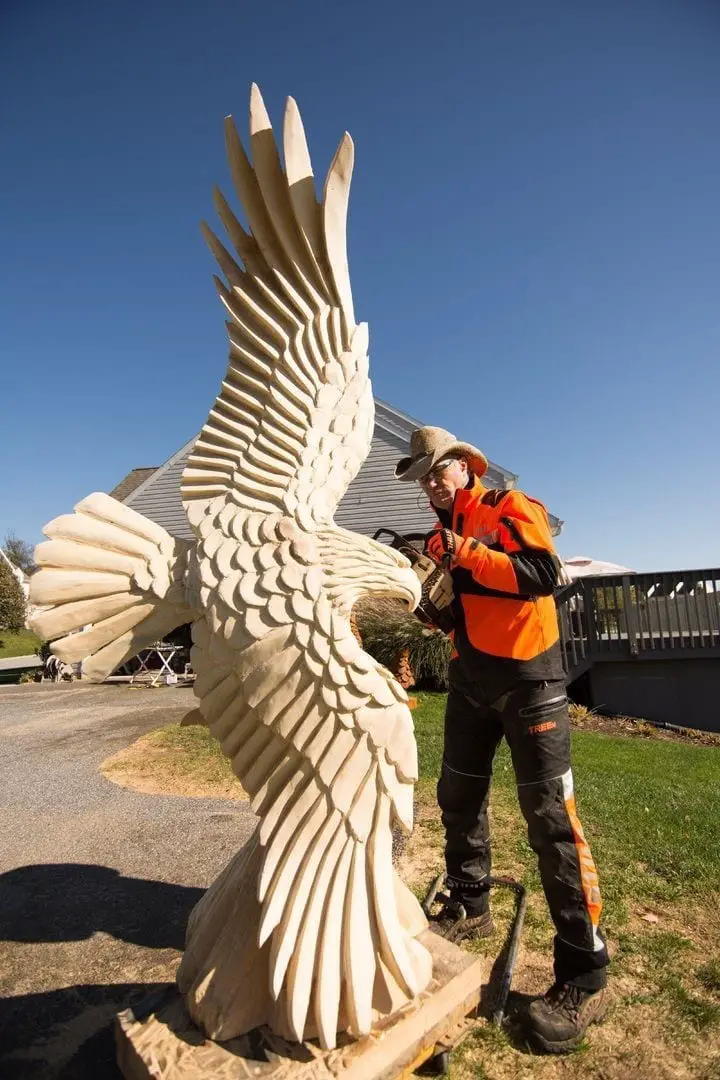Once upon a time in the Persian Gulf, there were families of gifted boat builders and navigators – wise and brave men that understood the language of the living nature so well that they gave each wind its own name.
Dating back to three thousand years ago, the ancient knowledge of building and navigating the traditional Iranian boats known as Lenj boats was designated on the Representative List of the Intangible Cultural Heritage of Humanity that’s in “need of urgent safeguarding.”
The cheap fiberglass modern-day boats and ships have started to replace the demand for the traditional Iranian Lenj boats.
But what many fail to comprehend is that losing the ancient know-how of the talented Lenj boat builders and navigators would be a terrible loss not merely from a national but from a global perspective.
The society of the 21st century has begun to rely so heavily on technologies that we are on the brink of letting the accumulated wisdom of our ancestors fade away.
Yet the carriers of the centuries-old traditions of crafting and sailing Lenj boats do still know perfectly well how to construct an entire vessel that is long-lasting and durable out of the most natural construction material available – wood.
What’s more, Iranian Lenj boats builders do not only give birth to a vessel that can withstand the test of time with their own hands but they also hold the key decoding some of the secrets of this Universe. Lenj boats sailors would write the names of the 17 stars on their compasses, each serving as a guide on which direction they should head on to while navigating through their sea voyages.
The fading art of building and sailing Iranian Lenj boats in the Persian Gulf has a higher chance to survive if the public awareness rises, and we all share a mutual responsibility on that matter.
“Maybe you are searching among the branches for what only appears in the roots”
Rumi
The Homeland of Lenj Boats: On a Journey back in Time from Persia to Iran
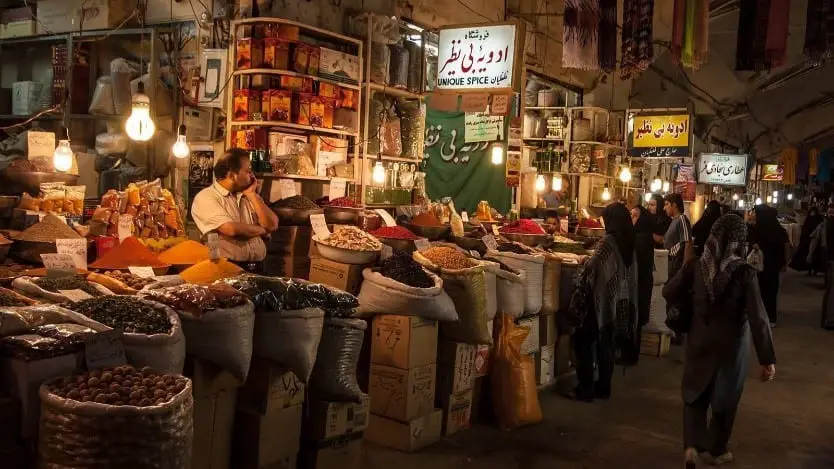
Iran is officially known as the Islamic Republic of Iran, although many still refer to Iran as Persia.
Greek historians used to refer to Iran as Persis which is literally translated into “land of the Persians.” However, Persis itself used to be one of the provinces of ancient Iran.
It wasn’t before 1935 that Reza Shah Pahlavi requested that the native name of the country – Iran, should officially substitute the term Persia.
Nowadays, “Iran” is the official name of the country that is being used in state contexts but both “Persia” and “Iran” continue to be used interchangeably in cultural contexts.
Located in Western Asia, Iran is the 18th most populous country in the world – over 81 million inhabitants reside in Iran. In fact, Iran is the second largest country in the Middle East. But more importantly, Iran is the homeland of some of the oldest civilizations.
Commonly associated with terrorism, societal depression, and violence, Iran is a country of contradictories as it is actually hiding so much beauty and invaluable gemstones of ancient art and crafts that are simply waiting to be discovered.
A country of incredibly diverse landscapes, the Caspian forests, the Lut Desert, Hormuz Island in the Persian Gulf, and Shirz Canyon display only a tiny part of the mesmerizing beauty of Iran.

The International Union for Conservation of Nature has listed more than 74 Iranian animal species on the red list, signifying the threats posed over Iranian’s biodiversity.
For instance, subspecies of the fastest animals on earth, the Asiatic cheetah, commonly known as Iranian cheetah has been classified as “critically endangered.”

According to an article published by The Guardian, “conservationists say only two female Asiatic cheetahs are known to be alive in the wild in Iran, which hosts the last surviving population.”
Biodiversity is of extreme importance to the well-being of all the ecosystems on Planet Earth. And since we, humans, are an intricate part of these ecosystems, it is high time that we take responsibility for our actions so that we can protect the abundance of the planet for the next generations.
Without protecting the biodiversity of the planet, we might end up deprived of some of the most amazing plant species, including tree species. Every woodworker knows the thrill of exploring the potential of different types of timber material and it is painful to imagine a world where good-quality timber is scarce, leaving us highly dependable on the modern-day construction materials.
In a similar context, protecting the ancient crafts such as that of building and navigating Iranian Lenj boats in the Persian Gulf is an issue that concerns each one of us, no matter how awkward this might seem at the very first sight.
Digging Deeper into the Very Roots of Iranian Lenj Boats
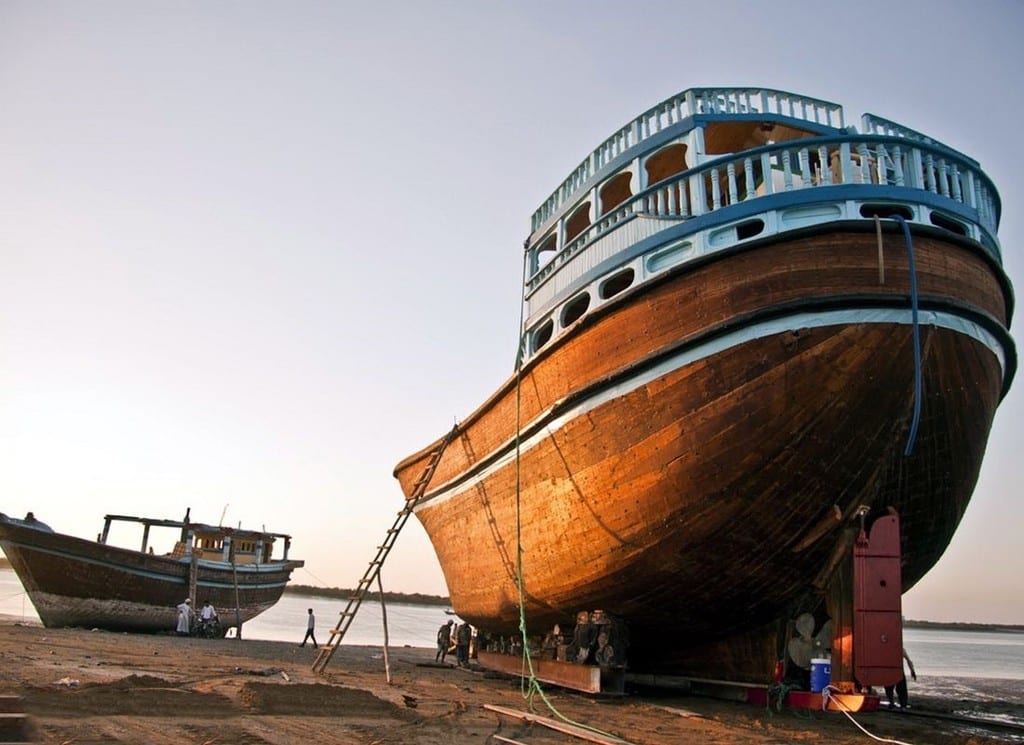
From an etymological point of view, the term “Lenj” originates from the English word “Launch.”
On the Persian Gulf, the wind was tamed and used in favor of sailing with the invention of sails which substituted the raw power needed to make the vessels move forward by oars. Little by little, Iranians learned the secrets of navigating the wooden vessels through decoding the language of the natural forces.
The types of traditional Iranian Lenj boats vary, as some were constructed as large boats while others as small ships. But apart from these minor differences, the purpose of all Lenj boats was similar: these majestic vessels were widely used for transporting passengers or cargo for hundreds of years.
Nevertheless, Lenj boats were also used for pearl diving which is intricately connected to the history of Indonesia.
According to ancient beliefs, a pearl is formed when raindrops filled with moonlight fall into the sea and get swallowed by oysters.
In reality, pearls are formed when an irritant, such as a tiny grain of sand, enters the oysters. As a result, oysters try to cover the irritant with fluid. Natural pearls are very rare to find, and the process of formation takes several years, so it is no wonder why few were the chosen ones who could afford to wear them.
Lenj boat builders traditionally created an open or semi-open deck as this allowed for the boats to be used for fishing, diving, pearl hunting, trading, as well as transporting goods.
Recognized as traditional local handicraft items, Lenj boats were commonly noticed sailing in the coastlines of the Persian Gulf, the Indian Ocean, and the Oman Sea for centuries.
Structurally, Iranian Lenj boats are sailboats that are further equipped with a powerful engine instead of sail.
Beautifully, each of the hand-built Lenj boats has got its very own name, some of the most popular ones beingMashooh, Samach, Manji, Sam’ah, Gatar, Hoory, Kochy, Beteel, Sho’ee, Ba’aleh, Bagareh, Boom, Jalbot, Sambook, and Tashaleh.
Although shipbuilding and navigation have marked the history of Iran for thousands of years, it wasn’t before the first half of the 18th century when the ancient craft turned into a blooming industry in the region during the Afsharid Era.
Iranian Lenj boat master builders were traditionally known as “Galaf.” They made use of very simple, primitive tools. Little has changed since the old times, as Galafs still use the same tools and the same methods as their ancestors.
With this in mind, the construction process takes a lot of time and dedication. But the great efforts of the skillful boat builders pay off, as the lifespan of an Iran Lenj boat is about 100 years.
Behind the Curtains: The Process of Building Lenj Boats

The construction of an Iranian Lenj boat takes only a limited number of materials.
The first step of the building process starts with the framework. The framework is created from solid wood that is moisture-resistible.High-quality, solid wood is actually the major construction material.
The second step is building the body of the boat. Traditionally, Indian wood panels known as “Sai” are utilized for this purpose. As pieces need to be fixed to each other, boat builders use nails and nuts. Plank by plank, each Lenj boat is brought to life thanks to the gifted builders and their laborious hand work.
Traditionally, the craftsmen opt for shark oil when it comes to sealing the outer body of the boats and making them waterproof.
Lastly, cotton impregnated with coconut and sesame oil is applied for strengthening the boats’ bodies, as well as for decorating. This particular technique is locally known as“Kalfat Kooby”.
Once completed, the Iranian Lenj boats are nothing less but an impressive work of art. Blue, red, and white are the most commonly used colors for decorations.
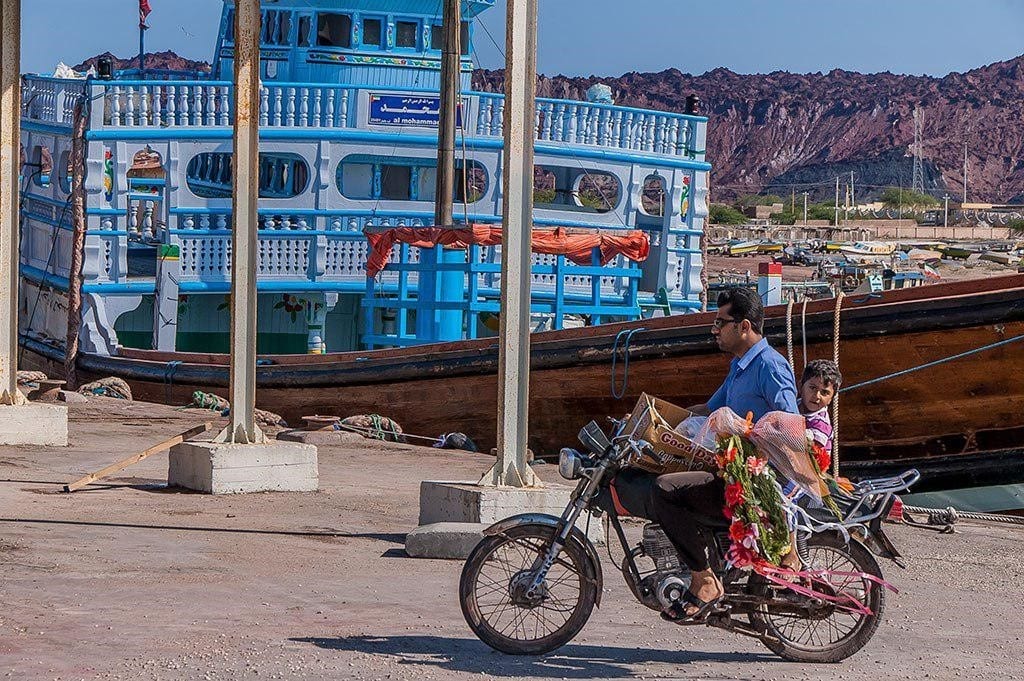
Nevertheless, the rifts are also filled with impregnated cotton pieces and finally sealed by the pitch which helps to keep water away from penetrating inside.
The home of the ancient Lenj boats building craft is “Kang Port.”
Interestingly, the tradition of crafting Lenj boats in “Kang Port” dates back to the very first settlement of the region. Other ports that are involved in the building and repairment of Lenj boats along the Iranian coastline include Reeg Port, Bushehr Port, Sheef Port, and Ganaveh Port, among others.
One of the most well-known Lenj boats building sites nowadays is located in Qeshm.
There Where Lenj Boats Craftsmen and Navigators Become One with the Stars…
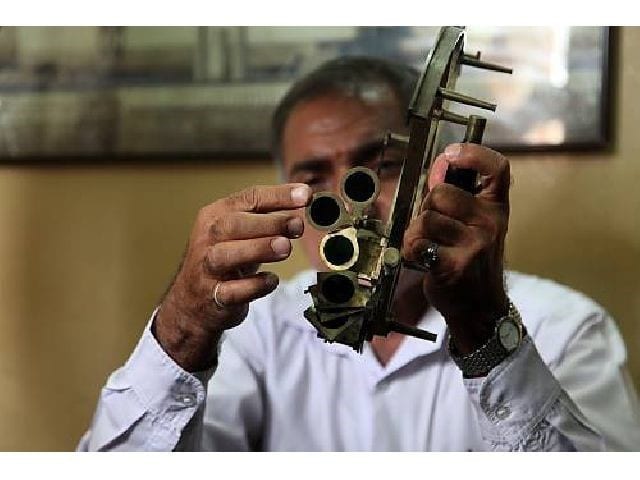
“There is a voice that doesn’t use words, listen”
Rumi
According to ancient scripts written in Avestan more than three thousand years ago, Iranians worshipped the natural powers which were manifested in different gods, and gods were both Good and Evil.
Being one of the mightiest natural forces that are also intricately connected to navigating by water, the God of the wind power in ancient Persia had a dual character – it could be good if the wind was to blow in a favorable direction or it could be bad if it blew in opposition.
Iranians started to tame the power of the wind very early in history. Did you know that the earliest windmills technology originated from Iran all the way back to 500 – 900 AD?
Wind traps were placed on top of architectural elements on land, and specifically in the desert regions and the Persian Gulf, allowing for the wind to be controlled. The hot wind was snared by the wind traps and made cool, guarding the spaces located below from the intolerable heat, as well as the destructive power of winds.
As sails substituted the use of oars, Iranians had to tame the power of the Universe, instead of the raw power of the men who used to row. Wise navigators had to lead the Lenj boats but the compass was not invented by that time.
Using an astrolabe which is an inclinometer traditionally used by astronomers and navigators for measuring the altitude above the horizon of a celestial body, Lenj boats could sail successfully on long voyages.
The vast sky was the Lenj sailors’ best friend as it showed them the direction they needed to head on to. During the day, the Sun location in daylight was measured and interpreted for precise navigation. During the night, the position of the Moon and the stars served the same purpose.
The color of the water was also used for navigation and weather forecasting purposes, as well as the height of the waves – that’s how profoundly the Lenj navigators understood the language of the forces of nature.
“If a big cloud comes from Keble side, the storm is coming. If the Keble becomes red, it is the sign of a storm,” explains a native elder.
What’s more, different winds had and still have their very own native names in the lexicon of Lenj sailors.
Even with the introduction of the compass, Lenj sailors did not give up on the accumulated navigational knowledge based on astronomy. Instead, they wrote the names of the 17 stars used as reference points on the compasses, thus merging these two technologies for delicate routing.
Various special ceremonies were also an intricate part of the life of Lenj boat builders and sailors, further showing the rooted symbiosis between the Lenj craftsmen and crew and the living nature.
One of the most popular celebrations – Fishermen’s New Year used to be widely spread. However, nowadays, the ancient celebrations are still preserved only on the island of Qeshm.
Ever since very old times, music and rhythm were inseparable of the Lenj sailing culture. Sailors would sing particular songs while working. The mysterious image of the Lenj boats’ crew pressing forward during their sea journeys has left a sparkling trace in the collective memory of the natives who continue to associate the very word Lenj with the group songs of the sailors.
Can the Ancient Building and Navigational Knowledge of Lenj Boats Survive the Winds of Change?

Traveling across the region of Iran can be quite of a contradictory experience.
On the one hand, soulless modern developments keep rising just like the numerous gleaming skyscrapers.
But on the the other hand, you can still come across locals who live in houses cooled by the traditional wind towers, meet men who keep wearing their traditional dresses and witness the spectacular building process of Lenj boats – a process accomplished without blueprints, and solely by hand.
Nowadays, many Iranians keep using the traditional Lenj boats for fishing, pearl diving, and for trade.
Back in the old days, Lenj boats were used for traveling on long distances – for instance, between India and Africa.
However, most Lenj boats are currently used on shorter journeys in the Persian Gulf, mainly for trade between Oman and Dubai, as well as the Iranian port of Bandar Abbas. Lenj boats are used for transporting a variety of goods, such as fresh fish, dates, textiles, and electronics to livestock such as sheep.
Master Lenj boat builders of the 21st century are faced with tremendous difficulties.
The timber material used for construction purposes has become extremely expensive. Tropical teak that is used for the construction of the hull is imported from Burma, Africa, and India. The rise in prices has hit the local craftsmen very hard.
Depending on its size, a new Lenj boat can cost anything from €300,000 and €500,000, and it also takes a great amount of efforts, time, and laborers to be completed. To illustrate this better, a 650-ton Lenj with an imported engine costs about $450 000 – $280 to make the body and $170 000 for the engine.
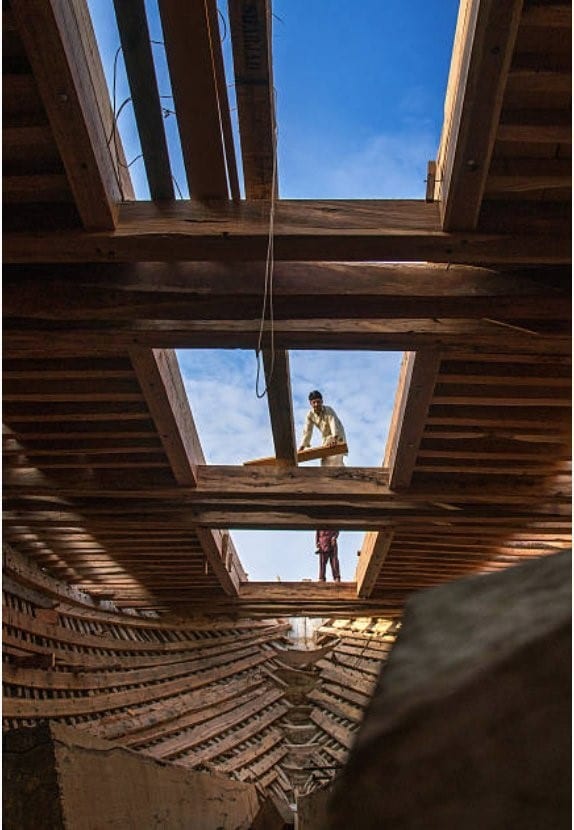
The high prices have made the demand for Lenj boats decrease significantly because of the cheaper alternatives.
“There are too many workshops making fiberglass boats here but this one only makes wooden Lenjes. But everywhere else they are making the fiberglass type,”
Master Lenj boat builder Hadi Stak
The traditional building and navigational knowledge are also endangered.
The young generations prefer the modern-day GPS systems, and the rapid urbanization rates are depriving the master Lenj boat builders of descendants to whom they can leave their legacy.
Fortunately, there seems to be light at the end of the tunnel. The 2.2 km road-rail Persian Gulf Bridge that links Qeshm and Bandar is about to be completed in 2019, increasing the demand for goods with the rising number of tourists.
The cheap fiberglass vessels are significantly less durable than Lenjes which can open the gateway to new horizons for the ancient craft in the new centuries.
Final Food for Thought
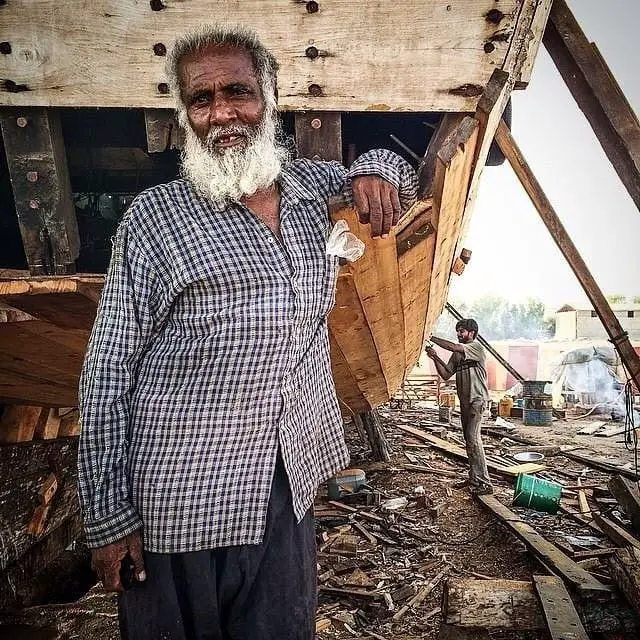
Ancient crafts such as that of building and sailing Iranian Lenj boats is, indeed, cultural heritage of the entire human race, whether we comprehend it as such, or not.
In a world that is developing at a never-seen-before pace, we have the chance to become the saviors or the murderers of the legacy of our ancestors for the next generations. One thing is for sure – working with wood has, is, and will remain an apotheon of the creativity of mankind.
“The spirit is so near that you can’t see it! But reach for it… don’t be a jar, full of water, whose rim is always dry. Don’t be the rider who gallops all night and never sees the horse that is beneath him”
Rumi
